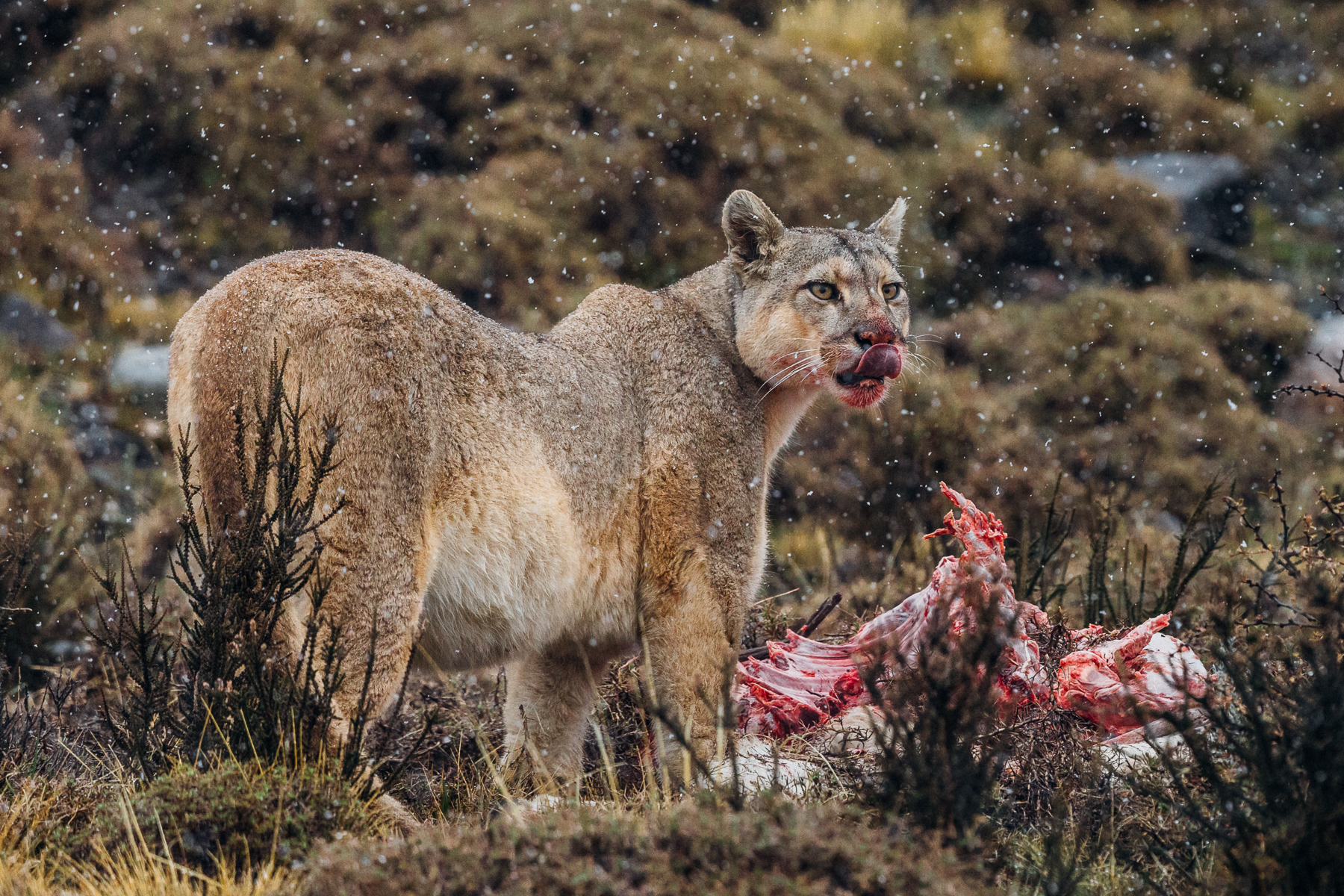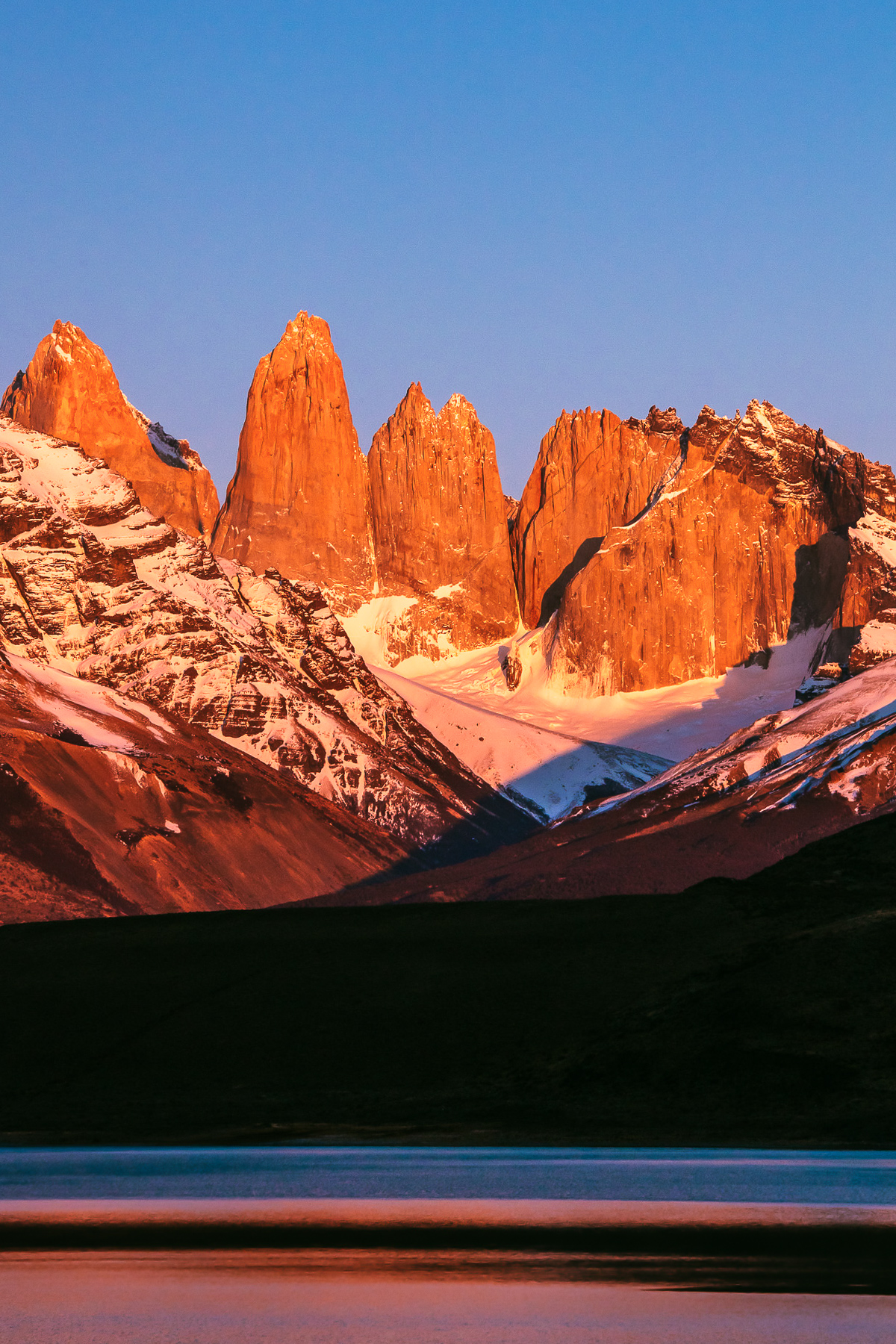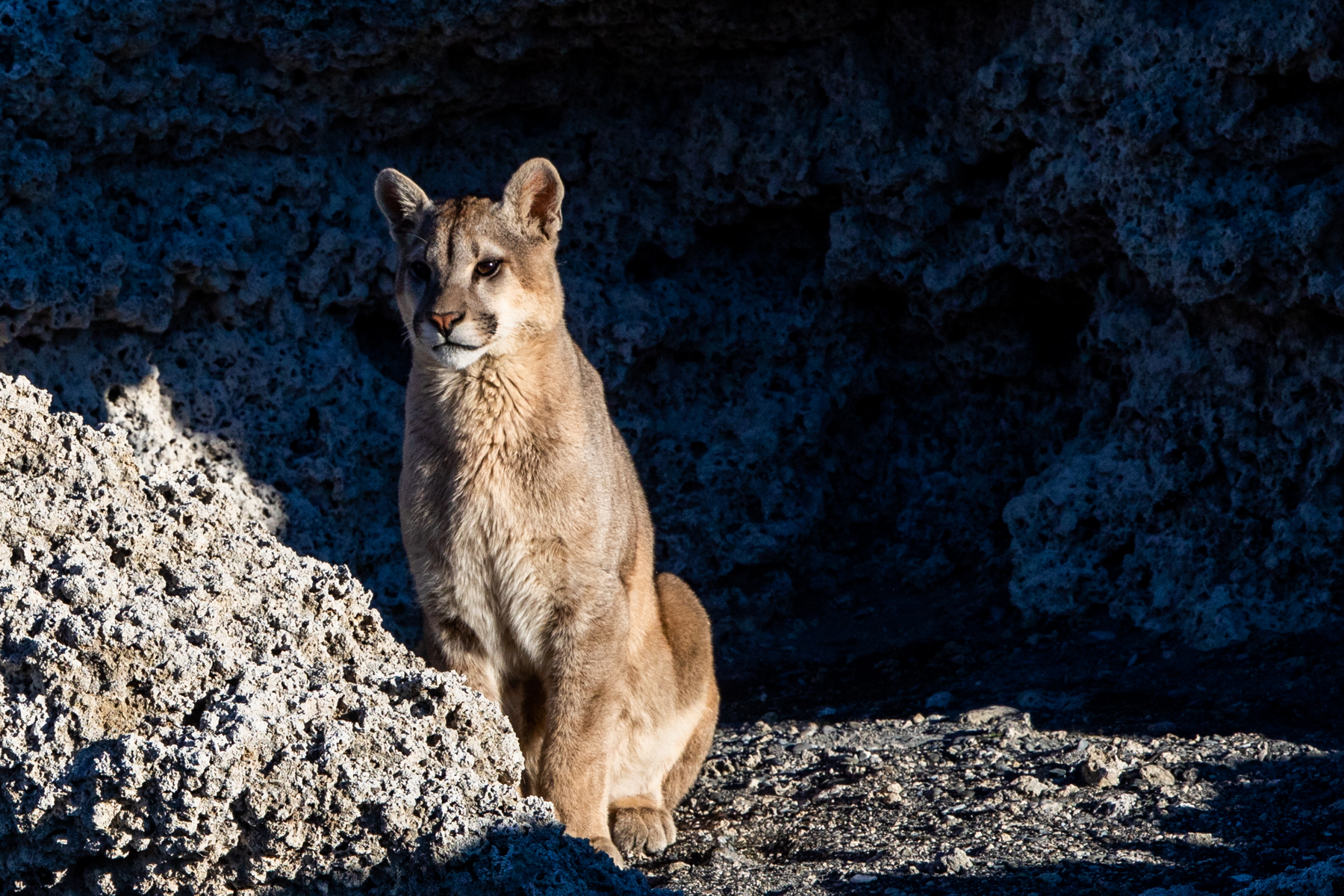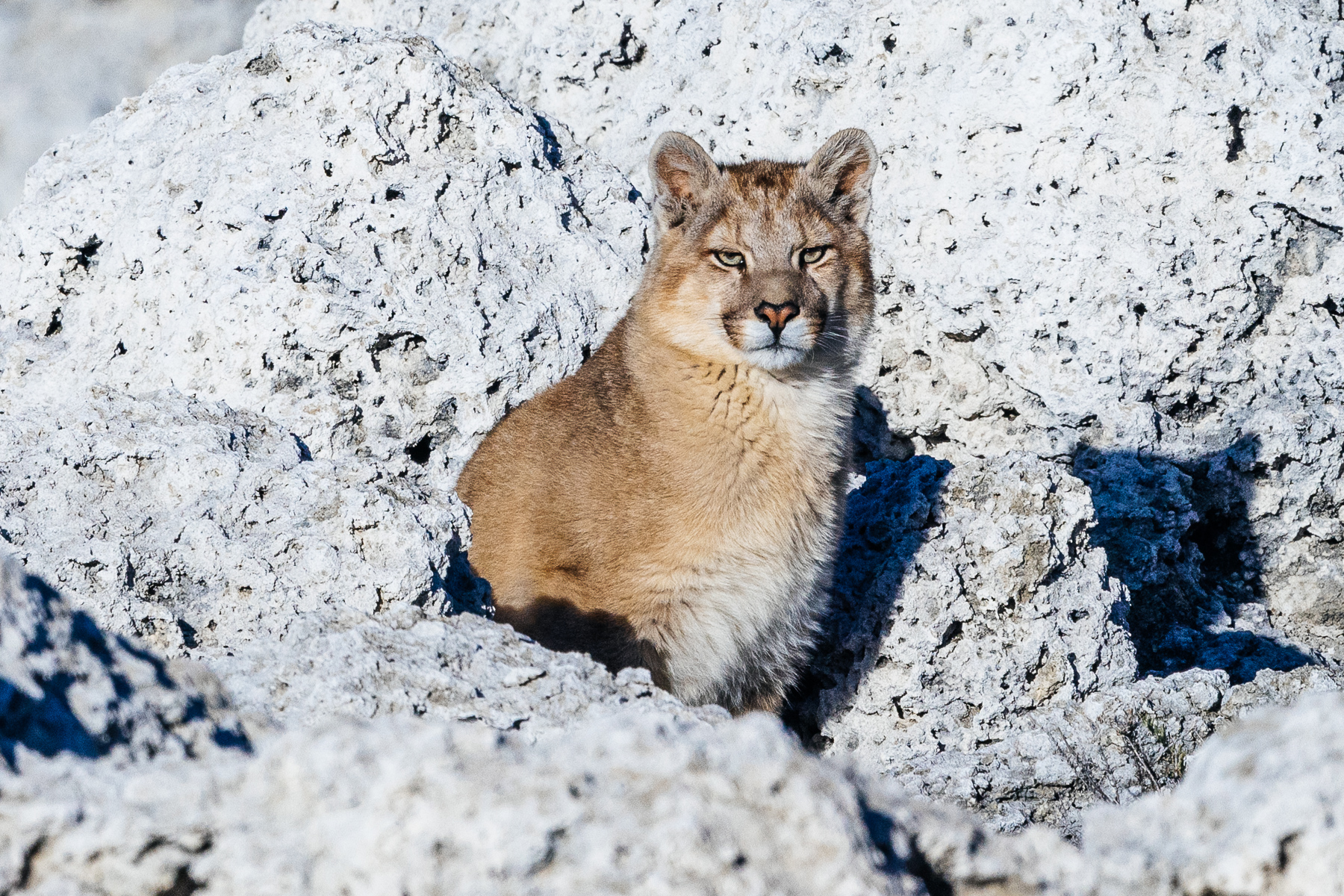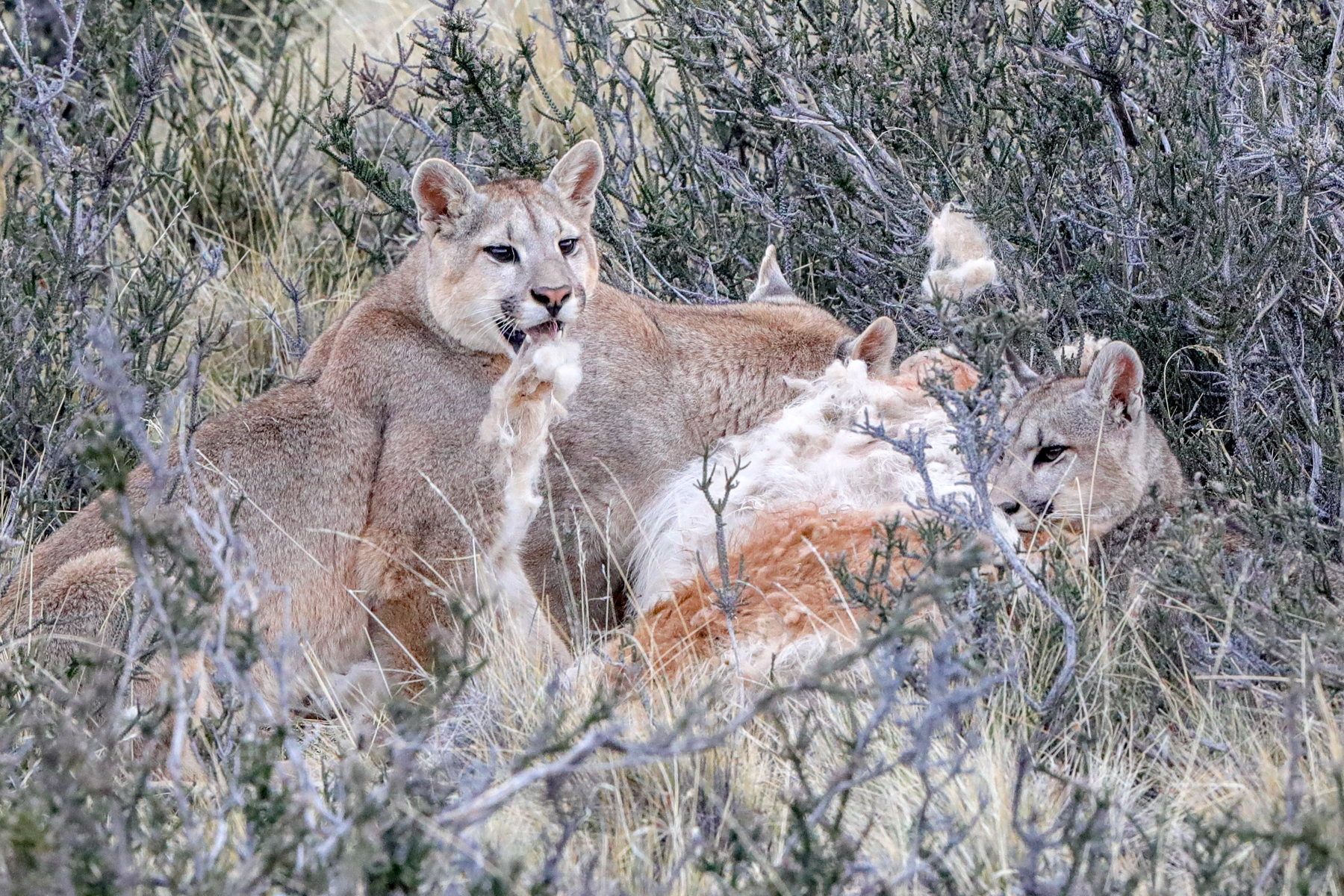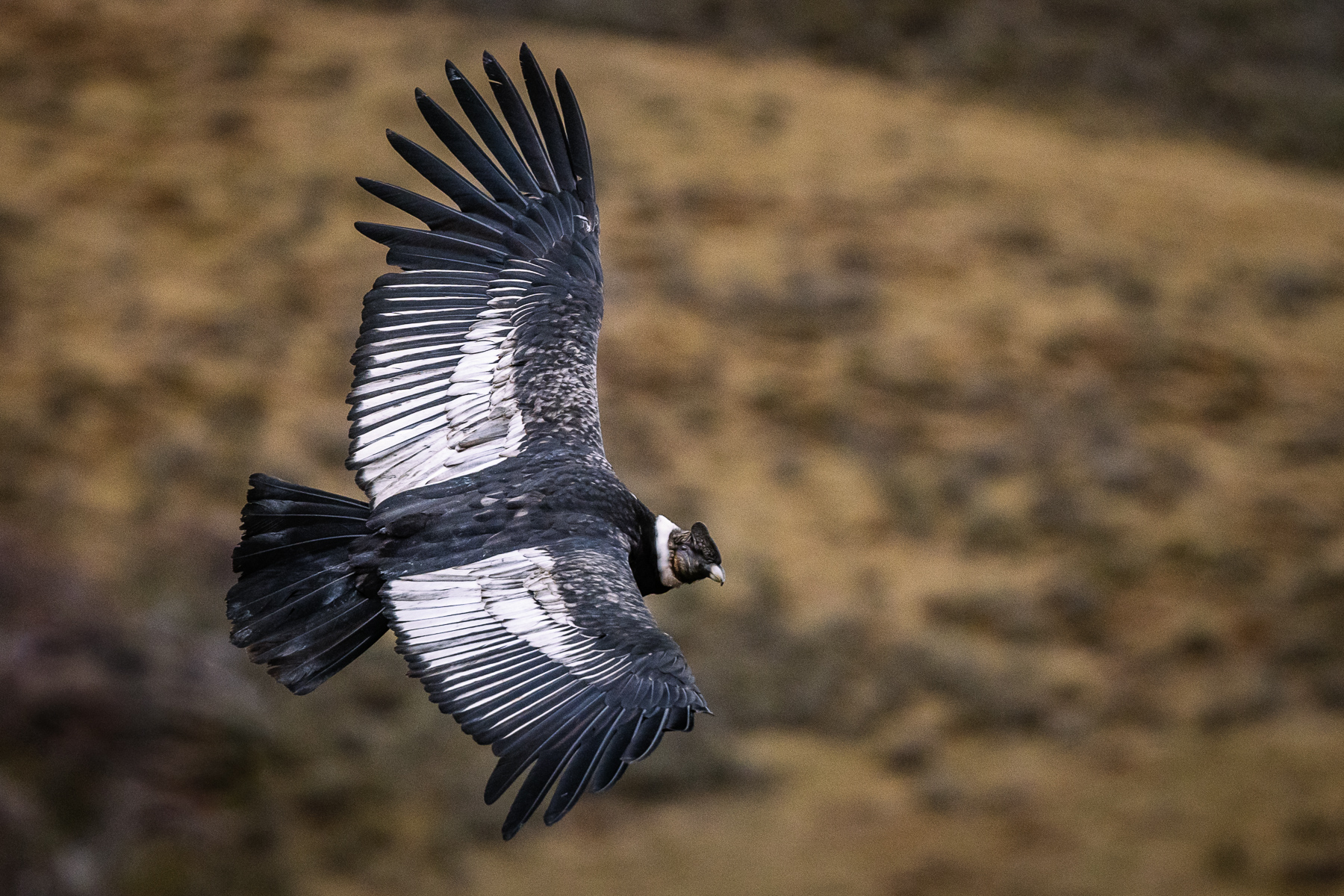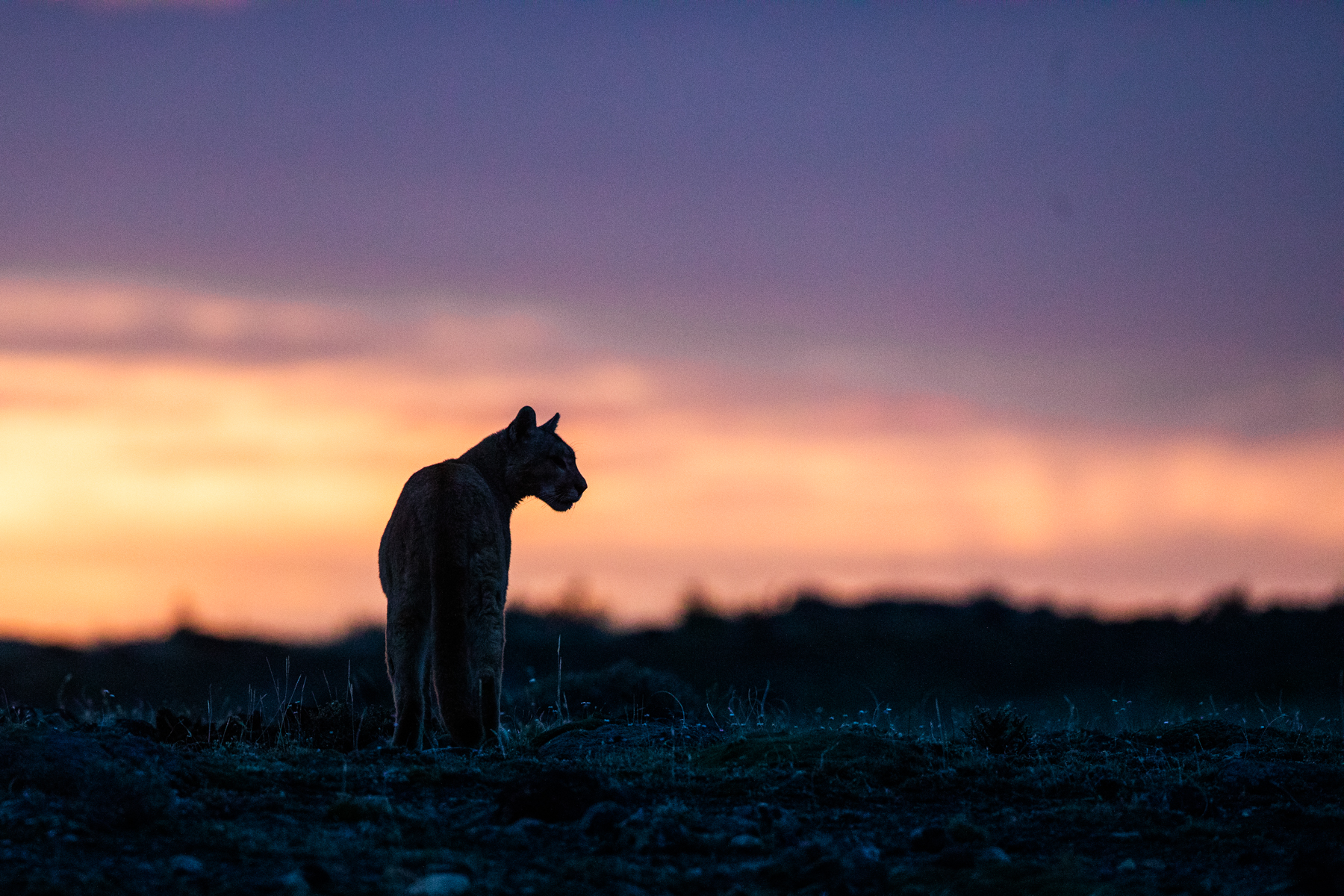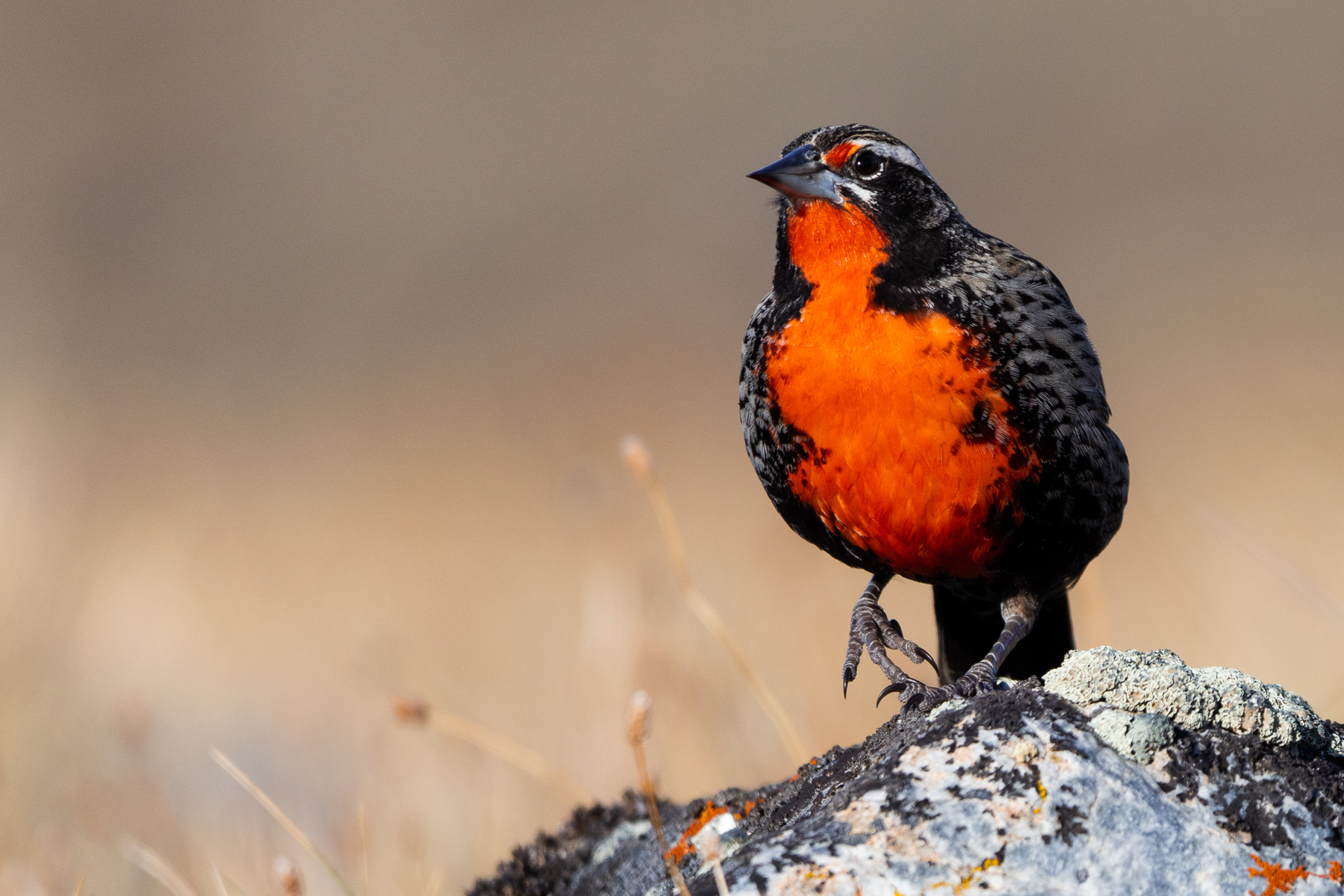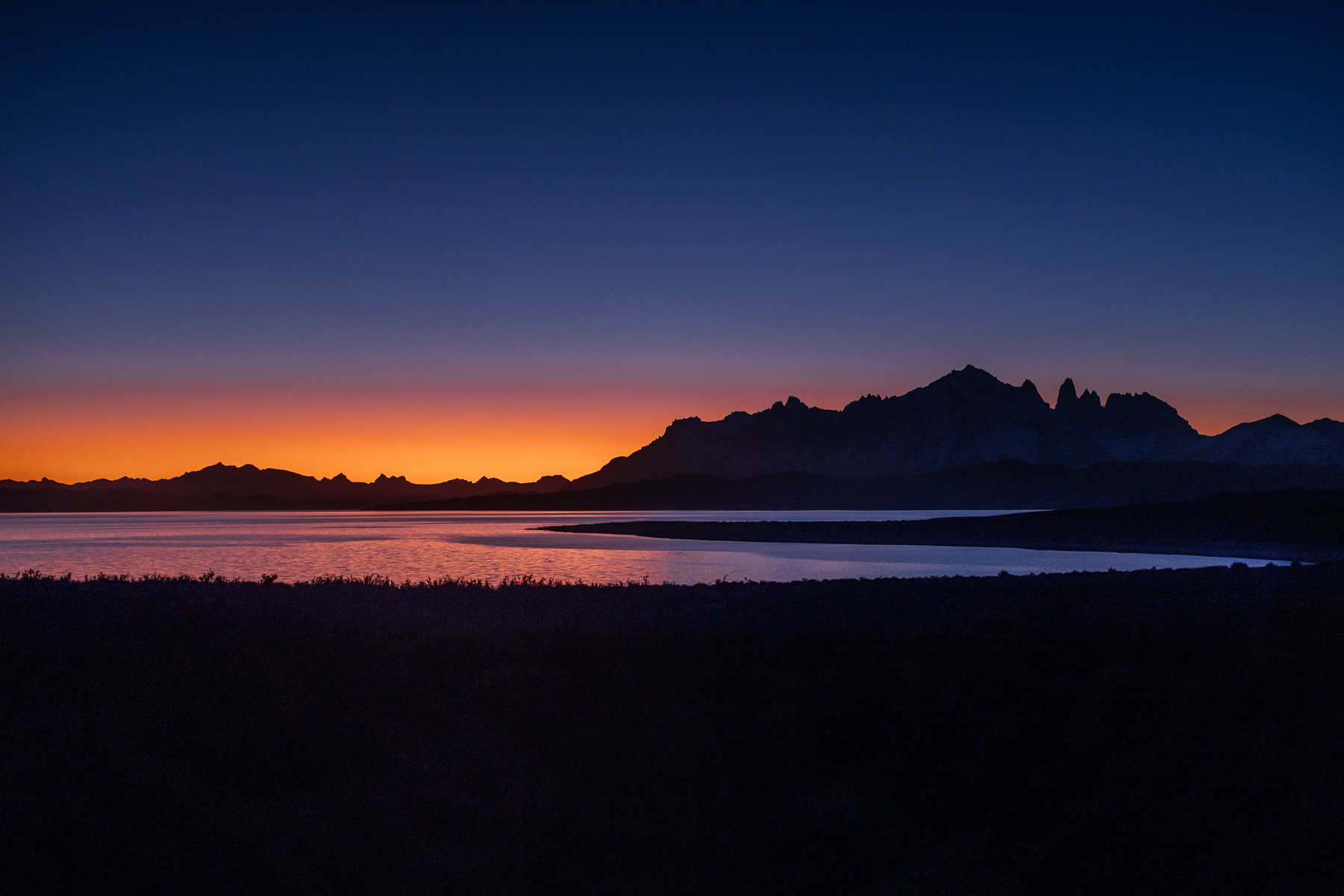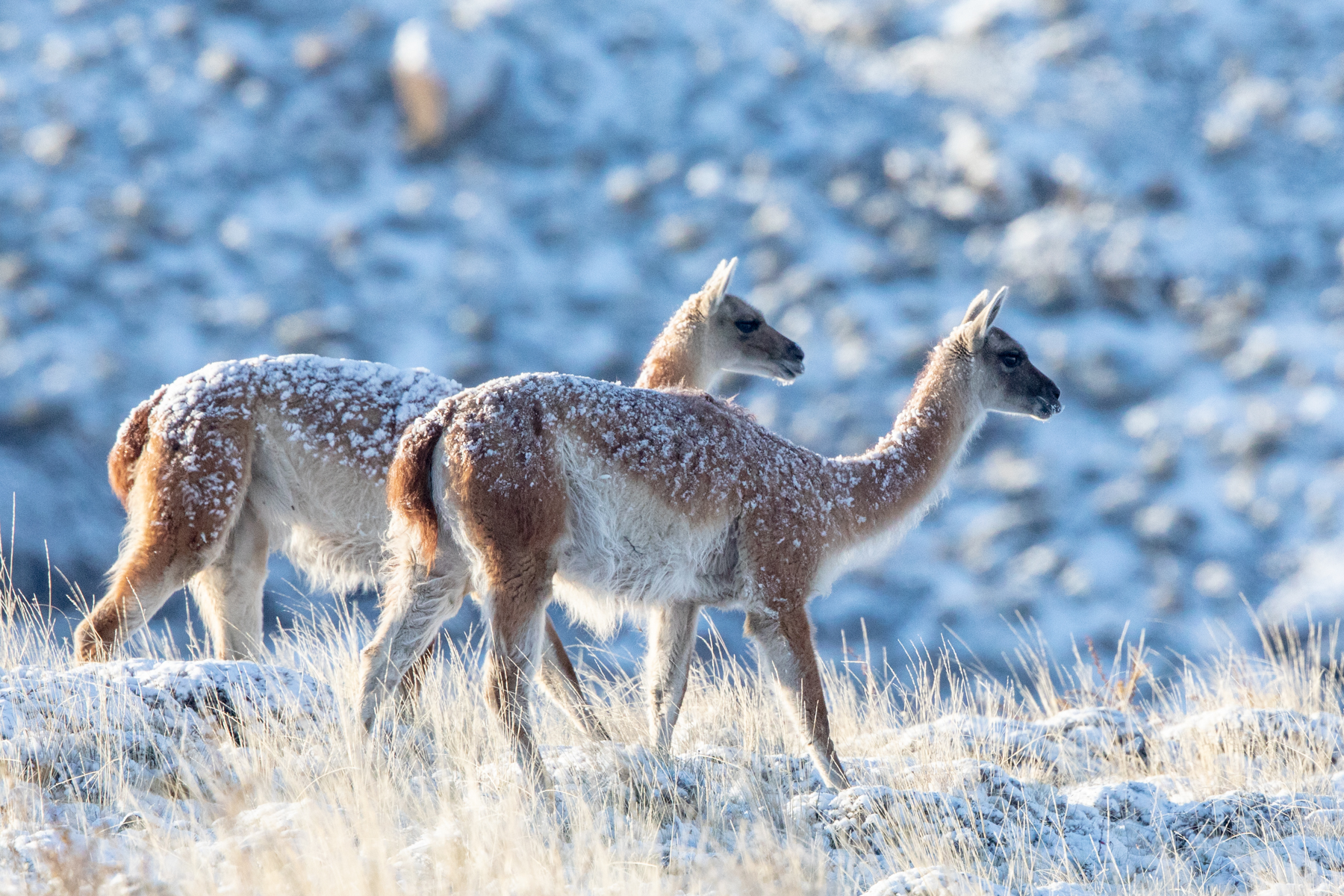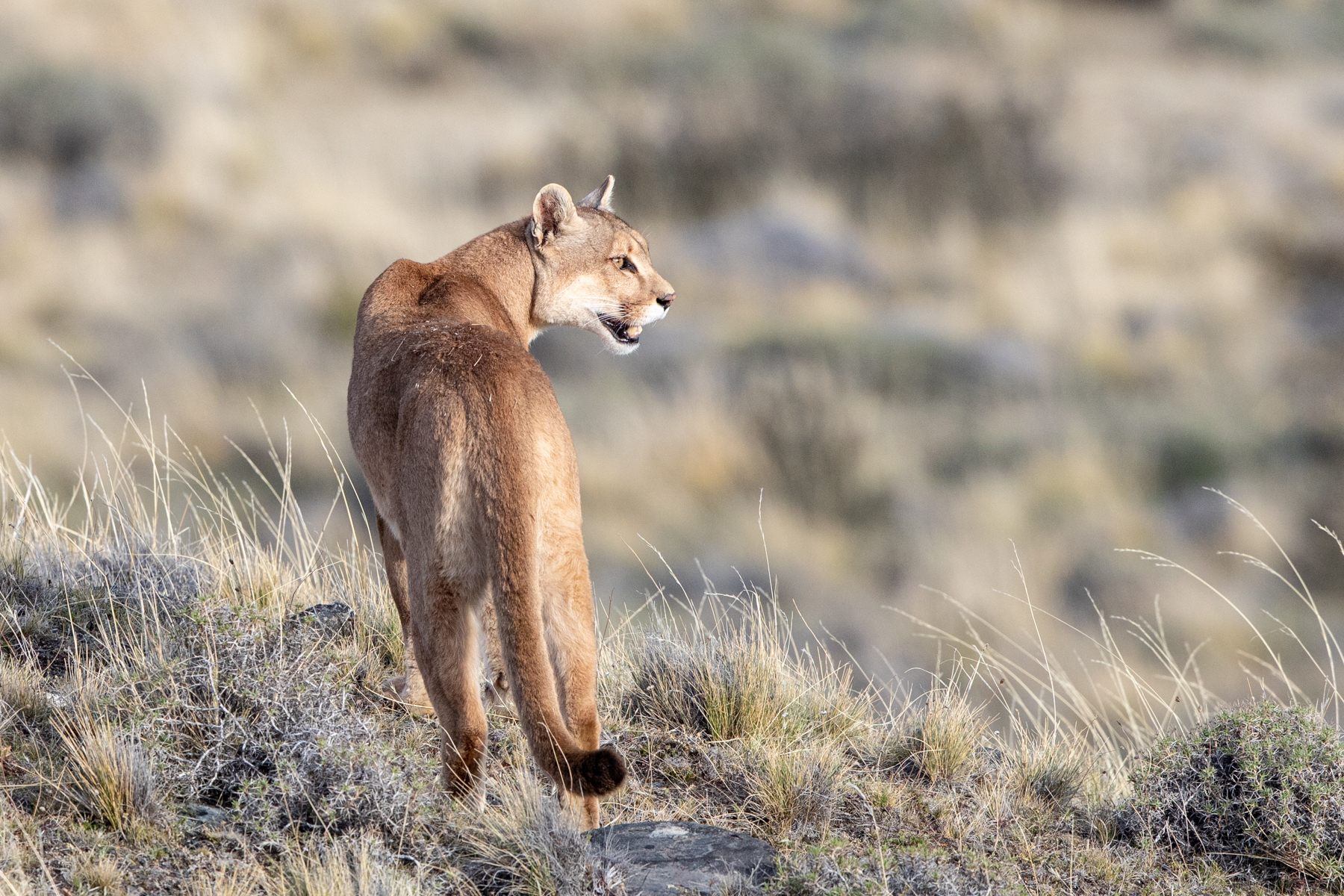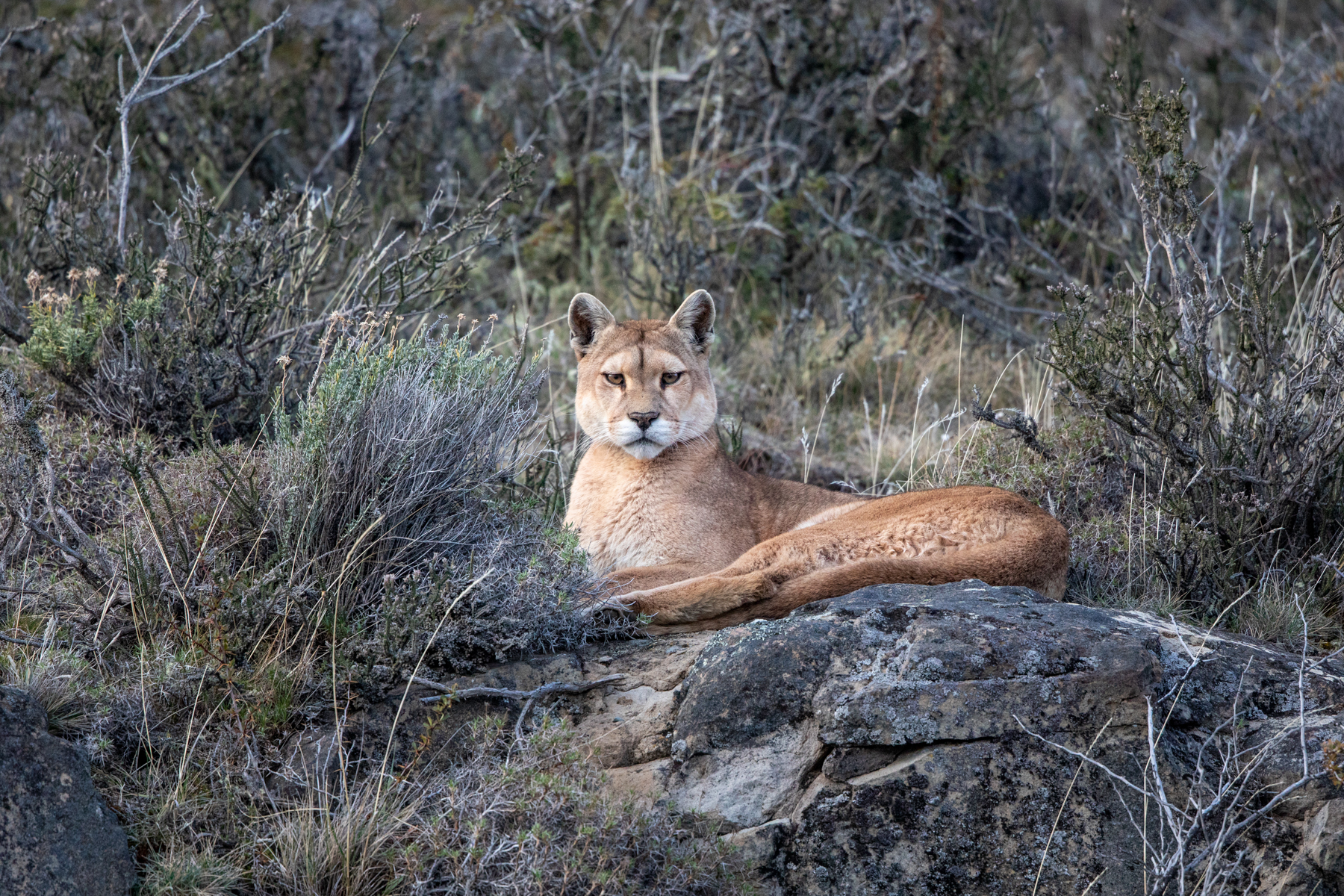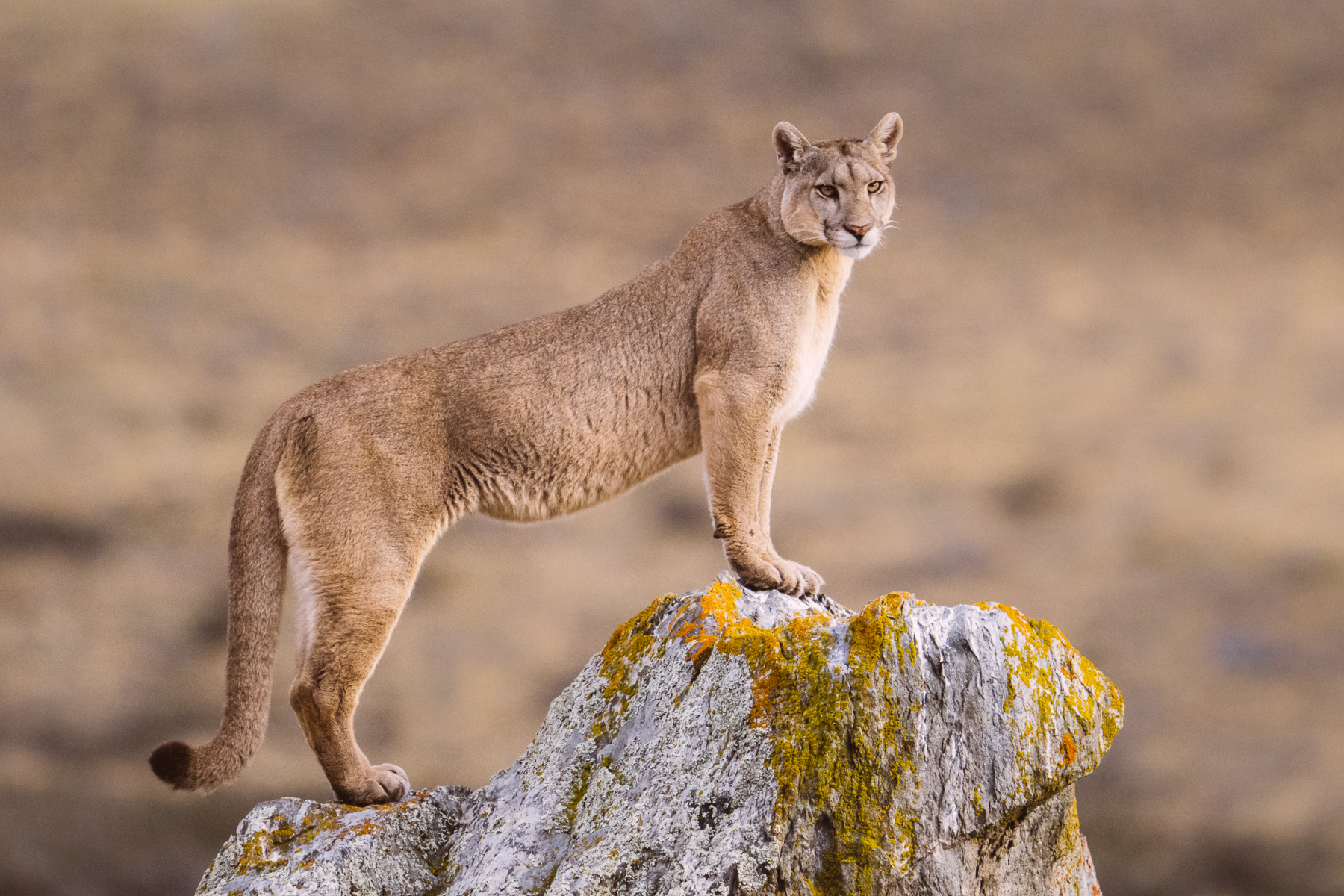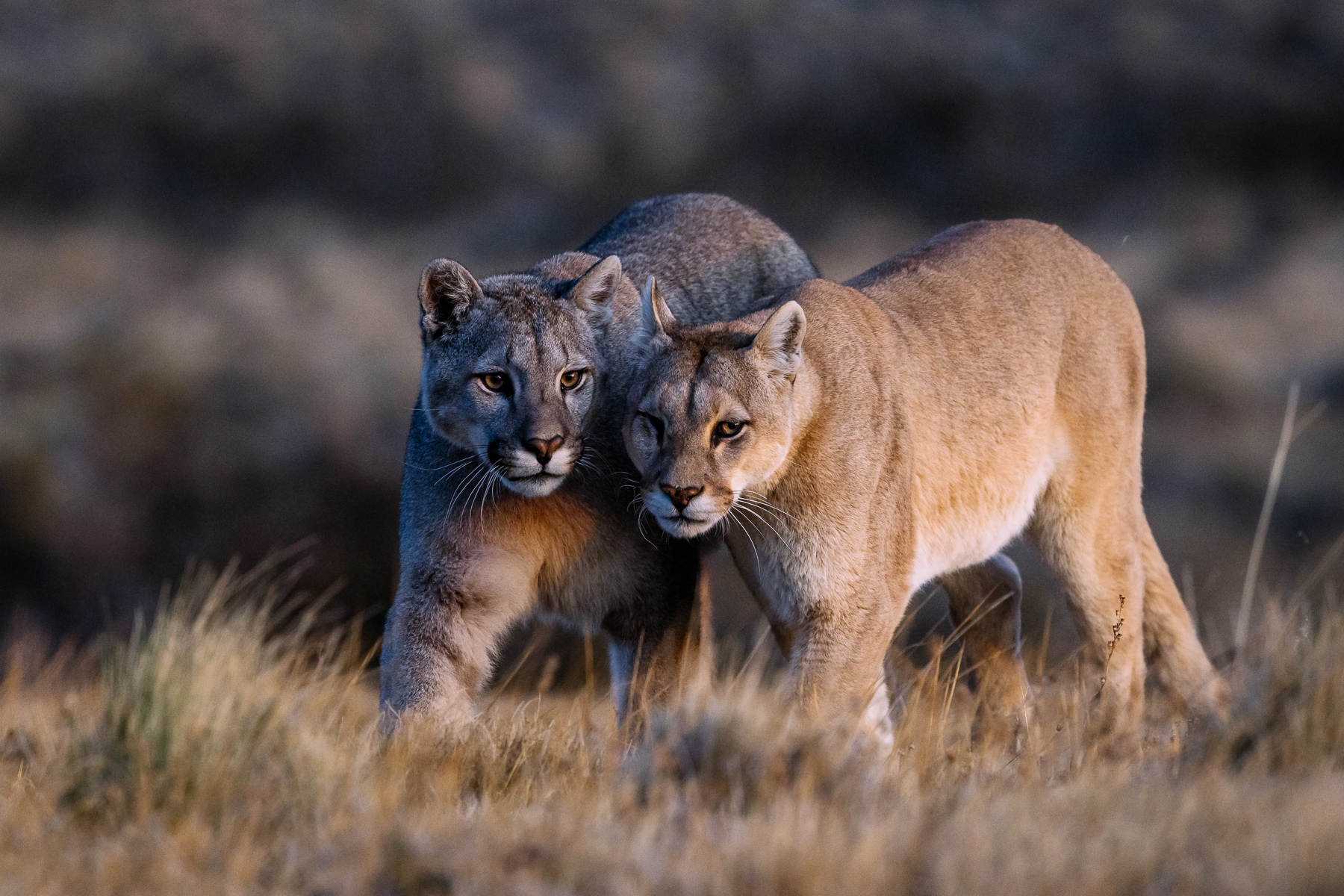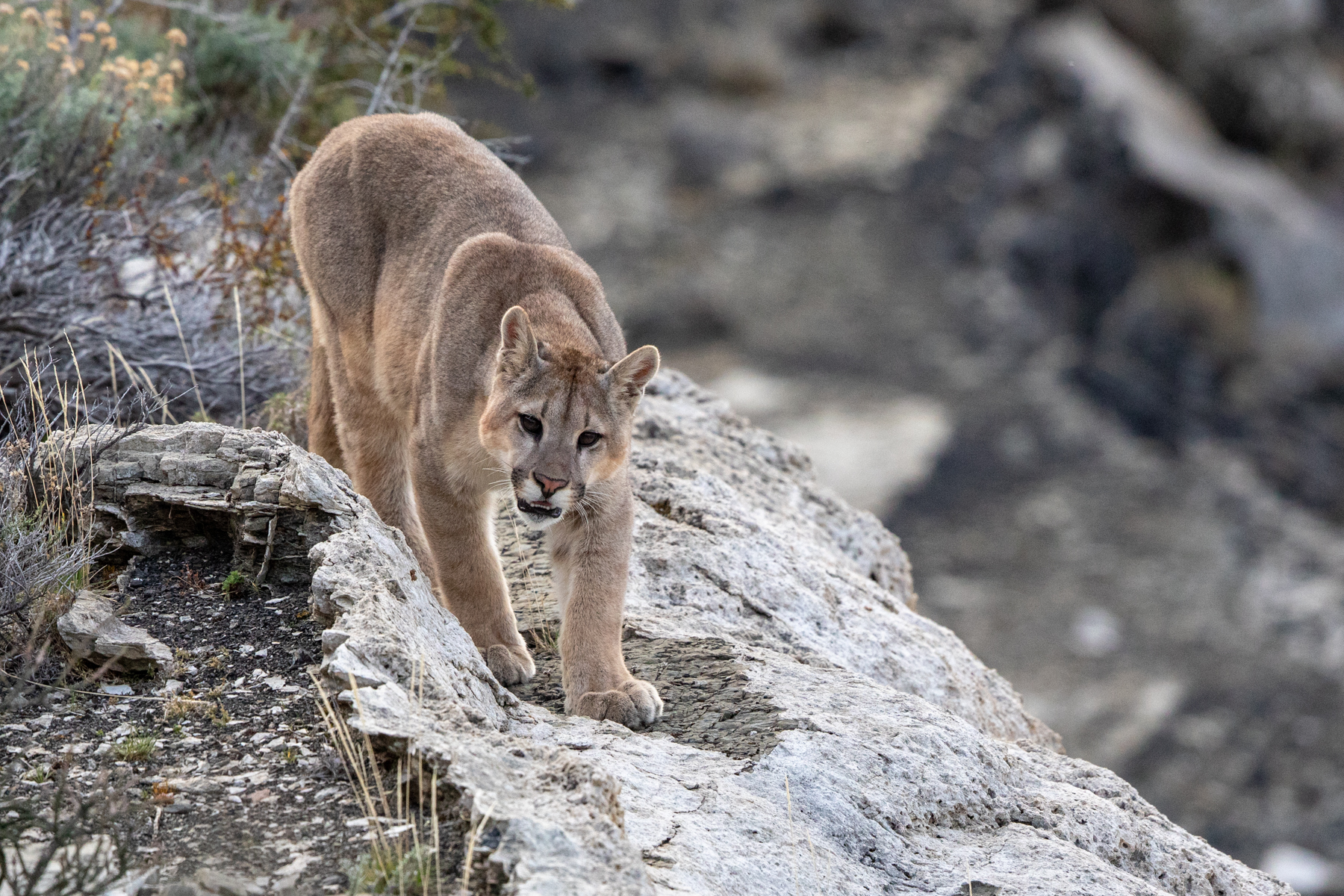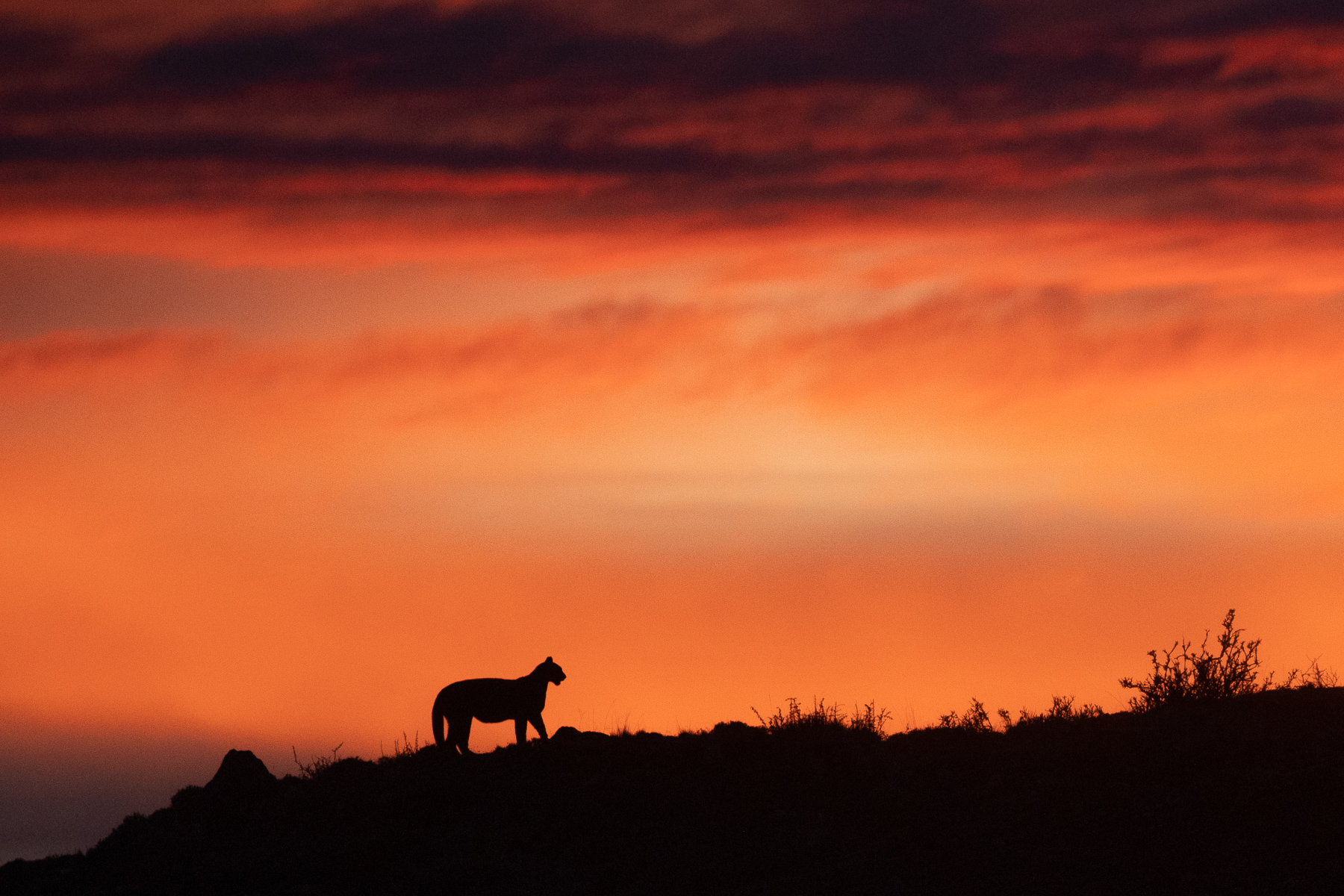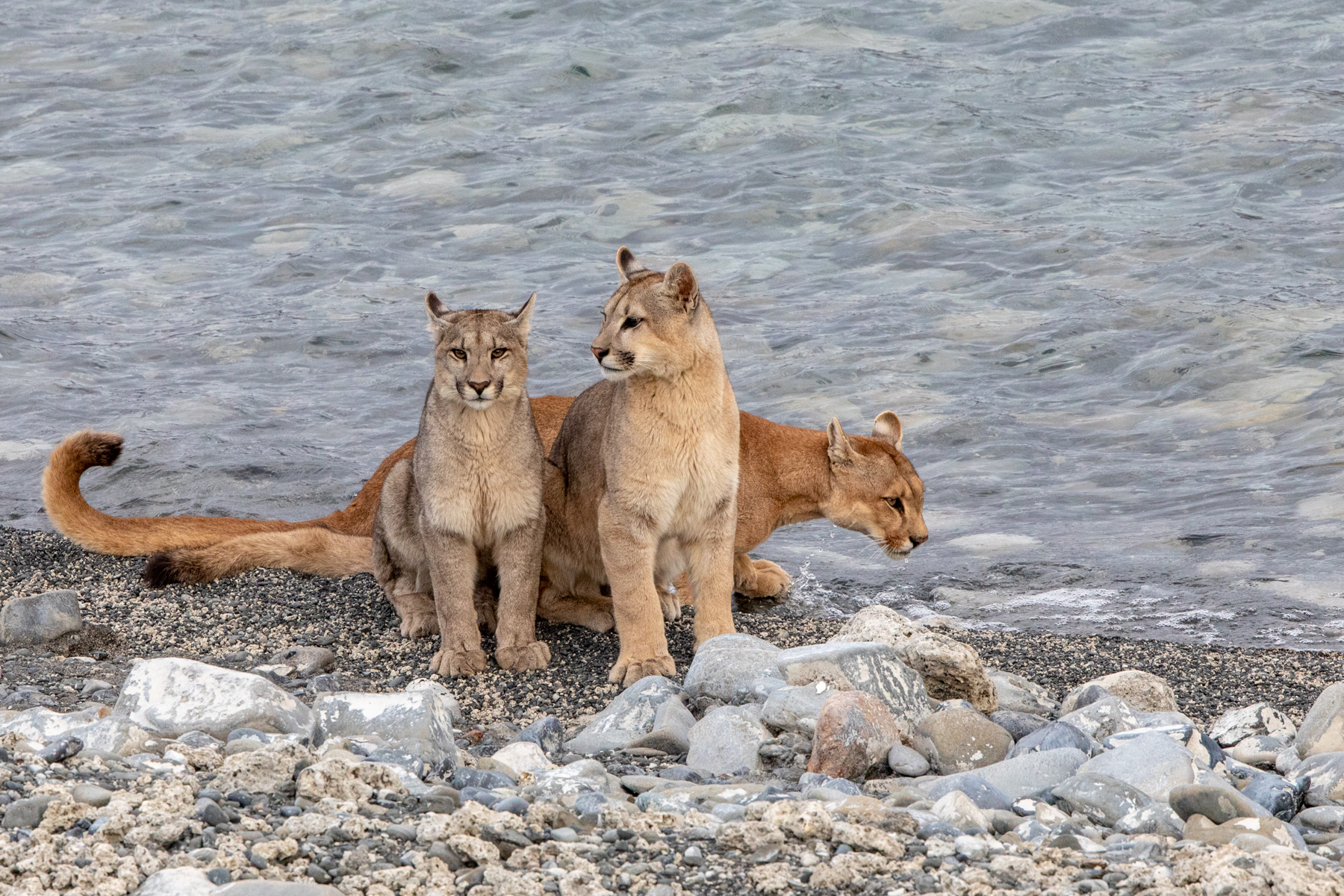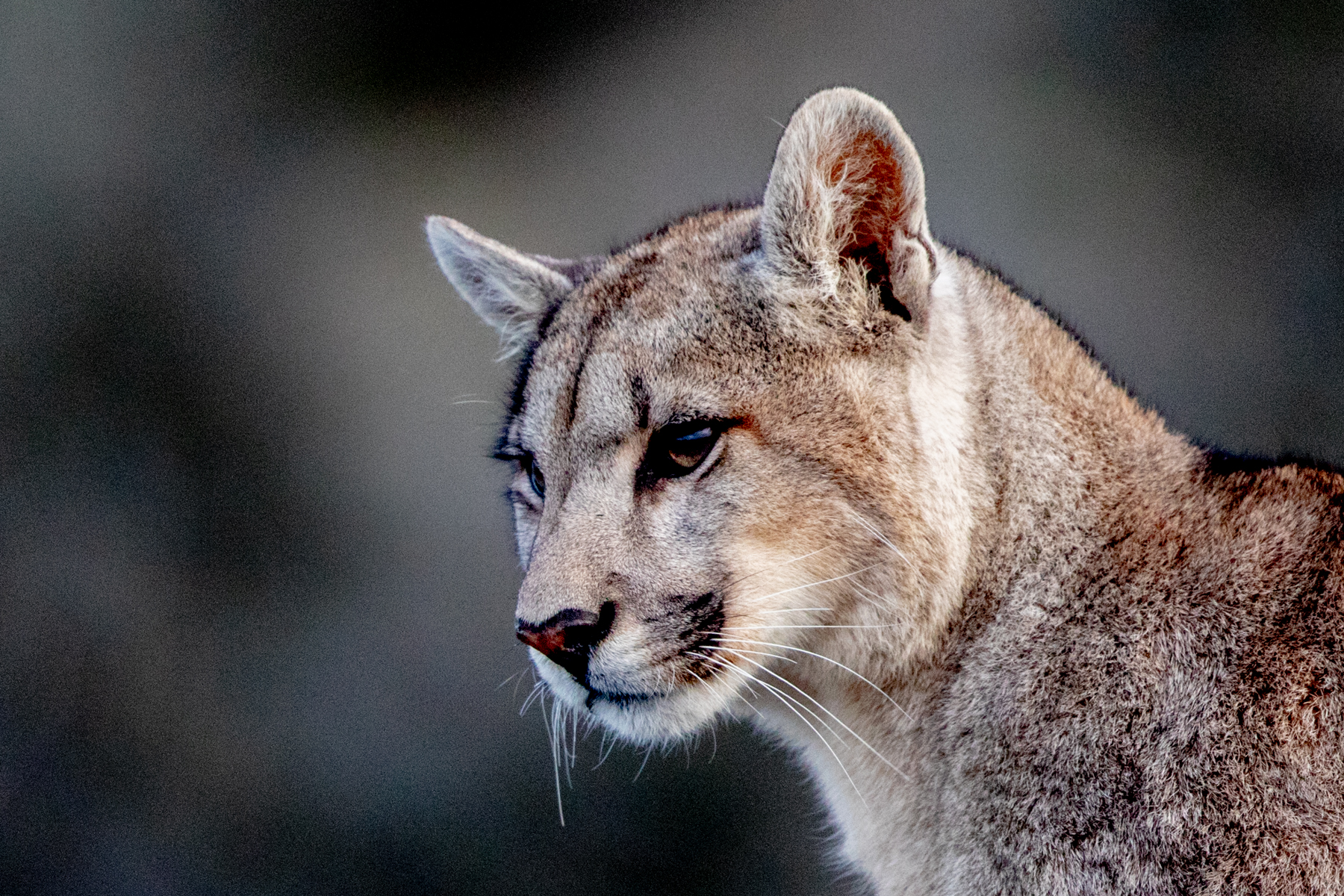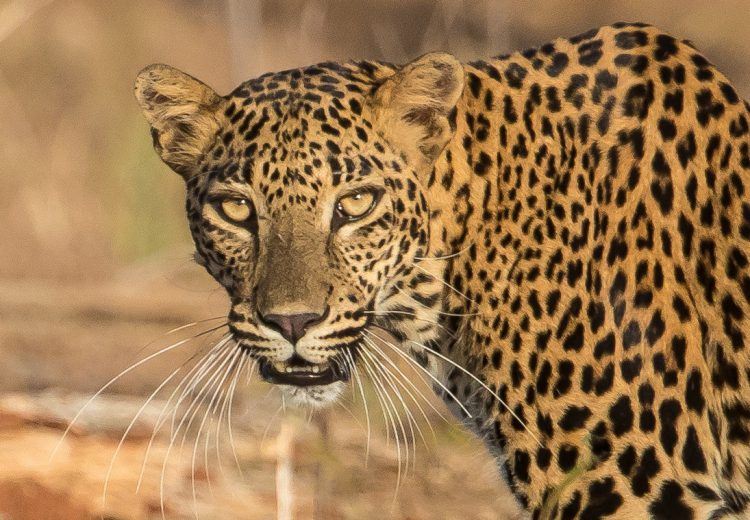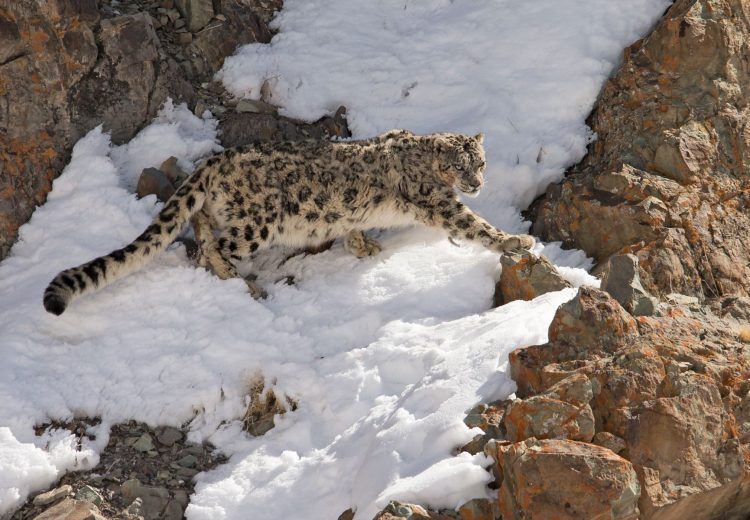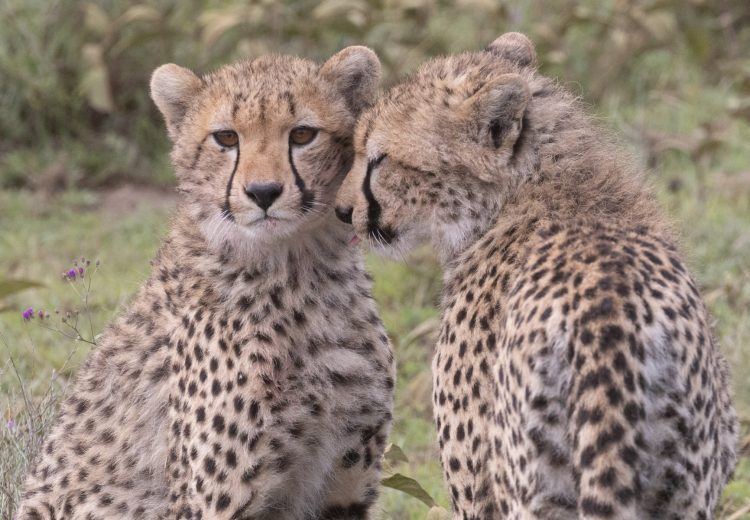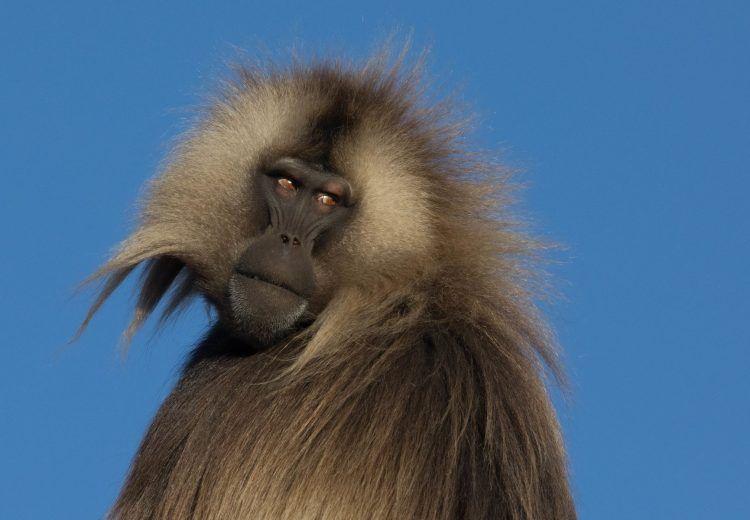South America (including Galapagos)
CHILE: WALKING WITH PUMAS – An Extraordinary Photographic Adventure at Torres del Paine























































































































A Guanaco leaps over a stock fence at Torres del Paine, the recent snow showering off its back. (Image by Mark Beaman)

Puma female portrait. (Image by Mark Beaman)

These two male cubs playing with their mother at Torres del Paine are already as large as she is! (Image by Mark Beaman)

A Grass Wren sings away in its reedy home at Torres del Paine. (Image by Mark Beaman)

A Puma surveys its world. (Image by Mark Beaman)

South American Snipe in the snow. (Image by Mark Beaman)

In front of a freshly killed guanaco this hungry puma licks her lips between mouthfuls, as snow falls all around her (image by Virginia Wilde)

The famous ‘towers’ of the Paine Massif, Torres del Paine National Park, glow orange in the morning sunrise, with winter snow still gathered in the mountains’ valleys (image by Virginia Wilde)

The late afternoon light catches a Puma staring out of a limestone recess. (Image by Mark Beaman)

Pumas on the rocks. (Image by Mark Beaman)

A Puma mother (at the water's edge) and her three cubs at Torres del Paine. (Image by Mark Beaman)

With its pale coat standing out against the even paler rocks, this puma cub peeks out from the thrombolites of Lake Sarmiento (image by Virginia Wilde)

Those cold eyes are fixed right on me. Just as well the Torres del Paine Pumas are harmless... gulp! (Image by Mark Beaman)

A left-behind Puma cub calls plaintively to its mother. They were soon reunited. Their calls can carry long distances. (Image by Mark Beaman)

The late afternoon sun peaks out from behind one of the famous 'Torres'. (Image by Mark Beaman)

Cleaning up is so 'cat'... (Image by Mark Beaman)

It was just too far! The ambush has failed and the Puma (also known as Mountain Lion or Cougar) crashes towards the ground, while the Guanaco escapes! (Image by Mark Beaman)

Andean Condors can soar and glide for much of the day, conserving energy between meals. They often use their feet and tail to adjust their glide angle, as well as their wings. (Image by Mark Beaman)

The endangered Huemul (or South Andean Deer). (Image by Mark Beaman)

The Puma pants from the exertion of the chase. The Guanaco lies dead by her side. In a few minutes she will fetch her cubs, calling them from afar with plaintive whistles. First she will lead them down to the water to drink, and then the feast will begin. It will last for nearly three days. (Image by Mark Beaman)

Pumas are truly beautiful animals. (Image by Mark Beaman)

The Grey Glacier of western Torres del Paine is one of the most spectacular in the world. (Image by Mark Beaman)

A Puma traverses an area of stromatolite limestone at Torres del Paine. (Image by Mark Beaman)

The scenery at Chile's Torres del Paine is awe-inspiring and the vistas just go on and on. (Image by Mark Beaman)

Male Upland Geese fighting. It is of course the breeding season... (Image by Mark Beaman)

A Black-chested Buzzard-Eagle keeps a careful watch. (Image by Mark Beaman)

Imagine trying to spot a Puma like this one at a kilometre range, rather than at 20 metres (60 feet)! (Image by Mark Beaman)

Bunches of mistletoe bedeck the Nothofagus trees surrounding a pond at Torres del Paine. (Image by Mark Beaman)

The smart Cinnamon-bellied Ground Tyrant on a sprig of 'mata negra'. (Image by Mark Beaman)

Its muscles rippling with tension, the Puma leaps at the Guanaco a second time. (Image by Mark Beaman)

The flightless Lesser Rhea is a relative of the ostriches and has beautiful soft feathering. (Image by Mark Beaman)

A strange, rainbow-tinged halo surrounds the sun as it rises above some dramatic peaks at Torres del Paine, Chile. (Image by Mark Beaman)

A young Puma surveys us from a slope above a lake at Torres del Paine. (Image by Mark Beaman)

After grasping the Guanaco's hind legs, the Puma hauls itself onto the animal's back. The Guanaco begins to fall. (Image by Mark Beaman)

A Puma hunting a European Hare, an introduced species in Patagonia that has become remarkably numerous, sniffs the air, trying to catch its scent. (Image by Mark Beaman)

Coot confrontration! A pair of White-winged Coots (left) try to drive off an intruding Red-gartered Coot. (Imnage by Mark Beaman)

Getting through all those layers of Guanaco wool is the second step, following a successful chase, towards getting a Guanaco feast. (Image by Mark Beaman)

Andean Condors are huge, but they are surprisingly versatile, maneuverable fliers. This one seems to be 'dancing in the wind' above an escarpment as it keeps an eye on us. (Image by Mark Beaman)

Puma at the lakeshore. (Image by Mark Beaman)

A Puma creeps softly forward, tring to surprise a South American Grey Fox. (Image by Mark Beaman)

A male Andean Condor, showing the yellow/brown eye, distinctive white collar and comb that distinguish them from the female (image by Virginia Wilde)

Puma silhouette at sunrise. (Image by Mark Beaman)

A hunting Puma stares right back at me. (Image by Mark Beaman)

Scale-throated Earthcreeper on a 'calafate' (Berberis) bush. (Image by Mark Beaman)

Guanaco in the snow at Torres del Paine, southern Chile. (Image by Mark Beaman)

An adult female Andean Condor stretches its wings before leaving its roosting place for a day of hunting for sheep or guanaco carcasses. (Image by Mark Beaman)

A Guanaco with a backdrop of Almirante Nieto peak and the Torres del Paine themselves. (Image by Mark Beaman)

A male Cinereous Harrier 'quarters' the Patagonian steppe in search of prey. (Image by Mark Beaman)

A Humboldt's Hog-nosed Skunk. (Image by Mark Beaman)

A Puma mother (right) and her almost fully grown male cub. Chile's Torres del Paine Pumas show a lot of individual variation in colour, ranging from rufous or tawny to brown or grey. (Image by Mark Beaman)

The stunning red breast of the male Long-tailed Meadowlark (image by Virginia Wilde)

The cheeky little South American Grey Fox is common at Torres del Paine, but disliked by the Pumas as it raids their kills. (Image by Mark Beaman)

Dolphin Gull with mussel breakfast in southern Chile. (Image by Mark Beaman)

Adult male Pumas are solitary creatures for much of the year. They have much broader heads than the females, but their colouration is similarly variable. (Image by Mark Beaman)

The end is near. The Guanaco stops running. The Puma continues to bite its back, using its weight to unbalance its victim. The hunt is almost complete. (Image by Mark Beaman)

Ambush! We have been watching a herd of grazing Guanacos (wild relatives of the Llama) in Chile's magnificent Torres del Paine. They gradually approach the area where we think a Puma is lying in wait in the 'mata barrosa' and 'calafate' bushes. She is! As a Guanaco nears her hiding place she bursts forth, scattering pieces of vegetation high into the air! (Image by Mark Beaman)

A pair of Upland Geese along the Río Paine at sunrise. (Image by Mark Beaman)

Sometimes getting at a good bit requires unusual acrobatics... (Image by Mark Beaman)

The sunsets in Patagonia can be breathtakingly beautiful. Here the sun has dropped below the horizon, and nearly all the colours have gone except a mesmerising glow (image by Virginia Wilde)

The handsome Bronze-winged (or Spectacled) Duck is pretty common at Torres del Paine. (Image by Mark Beaman)

Backlit portrait of a Guanaco, showing its long, silky hair. (Image by Mark Beaman)

Two Guanaco males rear up on their hind legs as they battle it out on a snowy morning at Torres del Paine. (Image by Mark Beaman)

A snow- and ice-encrusted peak at Torres del Paine, Chile. (Image by Mark Beaman)

A young male Andean Condor passes so close to us we can hear the wind whistling through its primaries (wingtips). (Image by Mark Beaman)

Sunburst over the stunning Grey Glacier in Torres del Paine National Park, Chile. (Image by Mark Beaman)

Guanacos with the snow still on their backs after unseasonal spring snowfall at Torres del Paine. (Image by Mark Beaman)

Constant attention to what is going on in the surroundings is essential for a hunting carnivore. (Image by Mark Beaman)

A pair of Fuegian Steamer Ducks. Most steamer ducks, a group restricted to southern South America and the Falkland Islands, are flightless, and that includes this species. (Image by Mark Beaman)

A trio of Pumas stare down at some grazing Guanacos, their potential breakfast. (Image by Mark Beaman)

Pumas have very individual faces and this one, while relaxed, seems to look on disapprovingly. (Image by Mark Beaman)

Puma cub in the snow at a lakeshore at Torres del Paine. (Image by Mark Beaman)

Looking majestic from atop of a large boulder, this female puma surveys the pampas below her and looks straight at us (image by Virginia Wilde)

A male Andean Condor soars against a magnificent Patagonian backdrop in southern Chile. (Image by Mark Beaman)

After its failed ambush, the Puma tries to outrun the Guanaco, which is truly fleeing for its life. (Image by Mark Beaman)

A Puma prowls through the 'mata negra' bushes at Torres del Paine. (Image by Mark Beaman)

A 'nest' of sleeping Pumas suddenly awakens when some noisy birds fly right over them. (Image by Mark Beaman)

Andean Condors generally look bulky and unmaneuverable, but they are perfectly capable of 'turning on a dime' if they want to. (Image by Mark Beaman)

The Cuernos del Paine, or Horns of Paine, reflected in the waters of the Río Paine on a still day. (Image by Mark Beaman)

A Guanaco jumping a fence at Torres del Paine in Patagonia. (Image by Mark Beaman)

Mount Fitzroy, the highest peak in Patagonia at 3,405m (11,171ft), is situated not far to the north of Torres del Paine. The plane to Punta Arenas goes right past it. (Image by Mark Beaman)

The Torres del Paine reflected in the Río Paine. (Image by Mark Beaman)

Blinka walking with her protective male cub (image by Virginia Wilde)

Sometimes the Pumas approach of their own accord. (Image by Mark Beaman)

A Silvery Grebe sails across a lagoon at Torres del Paine, Chile. (Image by Mark Beaman)

A Puma wades into a river at sunrise, prior to swimming across, at Torres del Paine, southern Chile. (Image by Mark Beaman)

Puma cubs love playing! Even when they are almost old enough to become independent. (Image by Mark Beaman)

A young Puma raises itself up on its haunches in order to get a better view. Our very experienced tracker had never seen this behaviour before by any individual, and I could not help wondering if it had picked up the idea from seeing humans regularly... (Image by Mark Beaman)

The towers (torres) catching the first pink glow of dawn. Torres del Paine presents an ever-changing and often awesome backdrop to a Puma photography tour. (Image by Mark Beaman)

'We are all ears'. Hunting Pumas watch their prey. (Image by Mark Beaman)

Grey Glacier detail, Torres del Paine. (Image by Mark Beaman)

European Hare, an introduced species in Patagonia that has become so common that some Pumas even specialize in hunting them. (Image by Mark Beaman)

Guanaco portrait. (Image by Mark Beaman)

Torres del Paine at sunrise, with the moon setting at the same time. (Image by Mark Beaman)

The Puma successfully grapples onto the Guanaco's hind legs and tries to use its own hind feet to slow down the chase. (Image by Mark Beaman)

Serrated edge detail of one of the ‘horns’ of Los Cuernos, one of the iconic mountains in the Paine Massif, Torres del Paine National Park (image by Virginia Wilde)

The cloudscapes at Torres del Paine are often spectacular. (Image by Mark Beaman)

"Got you mummy!" Puma cub and mother, Chile. (Image by Mark Beaman)

A pair of White-throated Caracaras. This is much the rarest of the three caracara species found at Torres del Paine. (Image by Mark Beaman)

Silhouetted against a brilliant orange sunrise sky, a puma slowly climbs a ridgeline (image by Virginia Wilde)

Grey Glacier detail, Torres del Paine. How can it be such an intense blue? (Image by Mark Beaman)

Two puma cubs lie side by side on a low ridge, backdropped by the iconic ‘towers’ of the Torres del Paine Massif mountain range (image by Virginia Wilde)

Even though its ambush has gone awry, the Puma keeps its eyes trained on the fleeing Guanaco while making a perfect transition from leaping mode to running mode. (Image by Mark Beaman)

Gaucho and dogs. The gauchos of the estancias near Torres del Paine are having to adapt to a world where Pumas are treasured, not killed, and some are finding it hard to adjust... (Image by Mark Beaman)

"Now we are big we can guard mummy while she drinks..." (Image by Mark Beaman)

An adult male Andean Condor in all its glory. (Image by Mark Beaman)

The gorgeous male Long-tailed Meadowlark. (Image by Mark Beaman)

A pair of Upland Geese. The female is the dark one. (Image by Mark Beaman)

Portrait of a Puma. If you are patient and stay still, some Pumas at Torres del Paine can approach quite closely. (Image by Mark Beaman)

A pair of Coscoroba Swans takes to the air. (Image by Mark Beaman)

Even a Puma likes to relax at the beach... (Image by Mark Beaman)

A trio of Andean Condors play in the strong Patagonian wind above a roosting cliff. (Image by Mark Beaman)

A hunting Puma crouches low to the ground only a short distance away. I crouch too. (Image by Mark Beaman)

A male Upland Goose in flight. (Image by Mark Beaman)

Skunks love to dig, and this Humboldt's Hog-nosed Skunk is no exception. (Image by Mark Beaman)

Southern Lapwing portrait. (Image by Mark Beaman)

A Puma swims across a river at sunrise. (Image by Mark Beaman)

A Black-chested Buzzard-Eagle soars over the wild landscapes of Chilean Patagonia. (Image by Mark Beaman)
|
Friday 30th August –
Tuesday 10th September 2024 Leaders: Mike Watson and one of the very best Puma trackers in the region |
12 Days | Group Size Limit 6 |
|
Tuesday 10th September –
Saturday 21st September 2024 Leaders: Virginia Wilde and one of the very best Puma trackers in the region |
12 Days | Group Size Limit 6 |
|
Wednesday 10th September –
Sunday 21st September 2025 Leaders: Mike Watson and one of the very best Puma trackers in the region |
12 Days | Group Size Limit 6 |
CHILE: WALKING WITH PUMAS PHOTOGRAPHY TOURS WITH WILD IMAGES
Inger and Mark’s exploratory trip in September/October 2018 was absolutely awesome! We watched 16 different individual Pumas during our visit and on some days spent hours with Pumas at quite close range, sharing their feline world and watching them rest, drink, play, walk, interact with other Pumas and even hunt hares, foxes and fully-grown Guanacos! The Torres del Paine ‘Walking with Pumas’ experience was one of our most extraordinary and most moving wildlife photography journeys ever!
Why not experience this for yourself? We are operating some very special, extended-duration Puma photography tours in the Torres del Paine region in the months of September and April, which are ideal times of year for getting great encounters with these wonderful creatures while enjoying shorter days with longer periods of low light, but avoiding the fierce cold of a Patagonian winter.
Unlike some Puma photography tours, we will not be spending most of our puma tracking time in Torres del Paine National Park. We have noticed that quite a lot of photography and wildlife tour operators do not mention in their tour descriptions that restrictions were put in place in 2015 that currently prevent any leaving of the roads or a single walking trail in the park in order to approach Pumas. The restrictions are doubtless necessary (the park has become very popular, and most visitors have no expert tracker along to advise them how to behave near Pumas), but it does mean that Puma watching/photography inside the park is not what it was.
We will certainly be spending some time inside this wonderful park, in order to enjoy the amazing scenery and also photograph other wildlife, but the great majority of our time and almost all of our Puma encounters will be on private lands where restrictions are much lighter and where we have a much higher probability of wonderful photographic encounters.
These private areas do have very high entry fees, amounting to not far off US$200 per person per day, so that does add considerably to the tour cost as compared with costs for tours that opt to try and photograph Pumas wholly or largely inside the Torres del Paine National Park, but the vastly superior photographic potential is well worth the additional cost in our opinion. In any event, even though Puma tracking trips have become very costly (southern Chile is nowadays a very expensive place), we have found we can include lots of Puma tracking in these special private areas outside the park and still offer a 12 days Puma photography tour with 8 nights in the Torres del Paine region (and offering significantly more tracking than most other Puma tours provide) at an attractive price.
It takes time to accumulate a good portfolio of Puma and other Torres del Paine wildlife shots, so having more than 4-5 days in the area is vital in our view. Very windy days are commonplace in Patagonia and unsuitable weather for good photography can easily last for 2-3 days at any time of year.
The Pumas of Torres del Paine have become famous among wildlife photographers, and justly so. In most parts of their huge range, which extends from Alaska and Canada southward to the southern tip of South America, this is a shy creature that faces intense persecution, largely owing to its propensity to take domestic stock in areas where wild prey has diminished owing to human transformation of the landscape. Even in today’s Chile, Pumas are widely hunted by ranchers and the total number of animals killed annually is quite extraordinary. Sadly, there is nothing unusual about Chile in this respect: Puma persecution extends the length of the two continents.
Fortunately, persecution ended a long time ago in Torres del Paine National Park, and in recent years some adjacent estancia (ranch) owners have also ceased to hunt Pumas. The result has been both an increase in their numbers and an increased willingness by the local Pumas to tolerate humans in their vicinity. Indeed a good number of individuals now seem quite content to let humans follow them around, at a respectful distance of course, and observe their Puma world of resting, sleeping, playing, drinking, mating and even hunting. With some of the individuals and families, providing you are reasonably fit (and by this we mean reasonably fit for a 60-year-old, not a 20-year-old), you can sometimes stay with them for long periods, but to do this you may well need to be able to walk over uneven ground for 2-3 kilometres (1.2-1.8 miles) and at times there will be uphill stretches in the rolling Patagonian terrain. Even if you cannot ‘walk with Pumas’ for long periods, our tours will still be highly productive for you, as you can expect to be able to get close enough to Pumas for great images before they decide to move on again.
As well as Pumas there are plenty of other mammals to photograph, including Guanaco (a wild relative of the Llama), the endangered Huemul (or South Andean Deer), Patagonian Hairy Armadillo, Patagonian Hog-nosed Skunk and South American Grey Fox. Birds are also plentiful and prime targets will include Black-chested Buzzard-Eagle, Cinereous Harrier, Chimango, Southern Crested and possibly White-throated Caracaras, Lesser Rhea, Black-necked and Coscoroba Swans, Upland Goose, various ducks, Black-faced Ibis, Chilean Flamingo and Southern Lapwing among many possibilities.
Before we reach Torres del Paine we will visit a superb site for photographing the magnificent Andean Condor, a place where we have a really good chance to obtain great images.
Accommodation
Our Chile Puma and wildlife photography tour uses comfortable hotels/lodges throughout.
Transport
Road transport will be by 4×4 vehicles. Many other southern Chile wildlife photography tours use minibuses/passenger vans. We can use the 4x4s to reach areas that others cannot and shorten some of our Puma hikes. Principal roads are mostly good, but ranch tracks can be rough.
Climate
Southern Patagonia is positioned at fairly high latitudes and it never gets very warm in the region, not even in the middle of what passes for summer. In September and April, it is typically cool during the day (fairly cold in the early morning). Daytime temperatures typically range from about -1 to 3°C (30-38°F) at dawn to an early afternoon maximum of 8-12°C (46-54°F). It can feel considerably warmer than this on a still sunny day and considerably colder on a windy cloudy day. The eastern part of Torres del Paine region enjoys plenty of sunshine, but we are likely to experience some overcast weather and it will probably rain or possibly even snow occasionally.
Photographic Equipment
During our Puma and other Chilean wildlife photography tours, the most used telephoto lens focal lengths with a full-frame DSLR or mirrorless are usually between 400-600 mm (sometimes even longer is useful). Focal lengths of 200-300 mm can, however, be useful for some wildlife shots and some scenic photography.
Torres del Paine is full of magnificent panoramic views and a wide-angle in the 16-35mm range is ideal. You will also want to cover the range up to 100 mm or more.
All the focal lengths mentioned above relate to full-frame cameras. Please adjust as appropriate for crop sensor and micro four-thirds cameras.
You can also get wonderful results throughout this Puma photography tour, with many subjects, with a high quality ‘bridge’ camera with an 18-20x or higher optical zoom and a wide-angle setting which is equivalent to 24mm.
A tripod can be a heavy burden on this particular tour, owing to the amount of walking, but a monopod can be helpful if you use a heavy telephoto.
If you have questions about what equipment you ought to bring, please contact us.
VIEW OUR GUEST’S PHOTOS
After a couple of false starts due to COVID, our trip to Chile finally went ahead, more than three years after we booked it. The long awaited and anticipated trip did not disappoint. Our expectations of the number and quality of sightings were blown away by what we experienced. There wasn’t a single day where we didn’t see any pumas. Most days we had multiple sightings and not just a fleeting glimpse from afar. We were lucky enough to spend quality time with pumas as they fed, relaxed, groomed and played. April was a wonderful time to visit, and we had some really special, intimate moments with two families with young kittens. Despite a last minute change in tour leader due to COVID, the trip went smoothly and was well organised. Our replacement leader was fantastic, as were our local team, driver and tracker. Between them they had great knowledge and experience of the area and photographing Pumas. Our tracker was instrumental in the success of the trip, spending long hours driving the hills to find Pumas. The estancia we stayed in was in the perfect location, close to the territories of the Pumas so minimising the drive time each day. My husband and I are well travelled, and we are in agreement that this trip was one of the best we have ever been on. We really appreciate the Wild Images ethos of spending as much time in the field as possible. The long days were well worth it, and we came away delighted with the beautiful images we captured, and the amazing experiences that will live long in our memories – Jenny Tovey (guest on our 2022 April Walking With Pumas Tour in Chile). To view a gallery of Jenny’s beautiful images from our tour click here.
Photographic Highlights
- Extraordinary photographic encounters with wild Pumas, sometimes at close range
- Walk along with Pumas in the vast wilderness of Chile's Torres del Paine region and share their world – an amazing privilege
- You may be lucky enough to witness a hunt, and perhaps even photograph a Puma taking a Guanaco or some other prey
- The awesome mountain scenery of world-famous Torres del Paine
- Guanacos, a wild relative of the Llama, at close range, sometimes with amazing mountain backdrops
- Seek out South American Grey Foxes and Humboldt's Hog-nosed Skunks
- Get so close to Andean Condors that you can hear the wind whistling through their wingtips
- Beautiful geese, ducks and swans
- Reflections of the stunning Paine range in lakes and ponds
- Travel by boat across Lago Grey to the face of the Grey Glacier and photograph deep blue icebergs, fierce peaks and the stunning, deeply-serrated face of the glacier itself
- Unusual cloudscapes that make Torres del Paine sunrises and sunsets even more spectacular
OUTLINE ITINERARY
- Day 1: Evening tour start at Punta Arenas in southernmost Chile.
- Day 2: Excursion to Andean Condor roosting cliffs and other areas in Punta Arenas region.
- Day 3: Transfer to Torres del Paine region, with photo stops en route.
- Days 4-10: 7 full days of Puma tracking and photographing the other wildlife and magnificent scenery of Torres del Paine.
- Day 11: Return to Punta Arenas via the magnificent western part of Torres del Paine National Park.
- Day 12: Morning tour end at Punta Arenas airport.
To see a larger map, click on the square-like ‘enlarge’ icon in the upper right of the map box.
To see (or hide) the ‘map legend’, click on the icon with an arrow in the upper left of the map box.
To change to a satellite view, which is great for seeing the physical terrain (and for seeing really fine details by repetitive use of the + button), click on the square ‘map view’ icon in the lower left corner of the ‘map legend’.
PRICE INFORMATION
Wild Images Inclusions: Our tour prices include surface transportation, accommodations, meals and entrance fees.
Our tour prices also include all tips for local guides, drivers and accommodation/restaurant staff.
Deposit: 20% of the total tour price. Our office will let you know what deposit amount is due, in order to confirm your booking, following receipt of your online booking form.
TO BOOK THIS TOUR: Click here (you will need the tour dates)
2024: confirmed £7350, $9490, €8630, AUD14320. Punta Arenas/Punta Arenas.
2025: provisional £7500, $9690, €8810, AUD14630. Punta Arenas/Punta Arenas.
Single Supplement: 2024: £640, $830, €750, AUD1250.
Single Supplement: 2025: £640, $830, €750, AUD1250.
If you are travelling alone, the single supplement will not apply if you are willing to share a room and there is a room-mate of the same sex available.
This tour is priced in US Dollars. Amounts shown in other currencies are indicative.
Air Travel To & From The Tour: Our in-house IATA ticket agency will be pleased to arrange your air travel on request, or you may arrange this yourself if you prefer.
CHILE: WALKING WITH PUMAS PHOTOGRAPHY TOUR: DETAILED ITINERARY
Day 1
The tour starts this evening at the comfortable Diego de Almagro Hotel in Punta Arenas, in southernmost Chile, where we will spend two nights.
A transfer will be provided from Punta Arenas Airport to the hotel provided you are arriving today.
Day 2
A full day for close encounters with Andean Condors and plenty of other bird subjects.
We will visit a large hill where we should be able to enjoy repeated close passes by Andean Condors, some coming so close that we will be able to hear the sound of the wind in their primaries (the feathers that form their long, slotted wingtips). We should see individuals of both sexes and all ages, and be able to capture images of both the dark undersides and the stunning black and white pattern on the upperwings of the adults.
The area is also good for photographing the striking Black-chested Buzzard-Eagle, while other birds we will want to try and photograph today include Upland, Ashy-headed and Kelp Geese, the rare Ruddy-headed Goose, Fuegian Steamer Duck, Magellanic Oystercatcher, the smart Dolphin Gull and the elegant South American Tern.
Day 3
Transfer from Punta Arenas to the Torres del Paine region for an 8 nights stay at a comfortable lodge. We will stop along the way for photographic opportunities, which today will be primarily Patagonian birds.
Days 4-10
7 full days to photograph Pumas, Guanacos, birds of prey, amazing scenery and much more besides, significantly more time than for other Puma photography tours.
Pumas tend to concentrate their hunting into the period from before dawn until about two hours after sunrise and again from about two hours before sunset until after dusk. Much of the rest of the day (and night) is spent sleeping, resting, washing, drinking and the like.
So, it is essential to be out early and late in the day if you want to see and photograph active Pumas. Watching and photographing resting Pumas in the middle of the day is easy in Torres del Paine, experiencing good action is the hard part. That is why the Wild Images tours are longer than most. That extra time greatly increases your chances of really good images. The other problem with the middle of the day is heat shimmer. Patagonia is a cool part of the world, but shimmer is often a major problem from about mid-morning to mid-afternoon.
Each Puma tracking day we will head out after an early breakfast and be in the right place shortly before sunrise. After the morning activity dies down, we will look for other intewresting subjects before returning to look for Pumas in the late afternoon and early evening. In between Puma encounters there will be plenty of opportunities to photograph Guanacos, other mammals, birds and of course the astounding scenery of Torres del Paine. Southern Chile’s high latitude and the Chilean time zone (GMT/UTC plus 3 hours) combine rather well for us in that sunrise is quite late in the morning in Chilean Patagonia, so we don’t have to get up at some totally ungodly hour!
Day 11
Providing the weather makes it worthwhile, we will cross the entire width of the park this morning, reaching as far as stunning Lago Grey, which is flanked by snow-covered mountains and fed by a huge glacier. The latter frequently spawns small icebergs that are often blue in colour. This afternoon we will return to Punta Arenas for an overnight stay at the Diego de Almagro Hotel.
Day 12
Our Puma photography tour ends this morning after breakfast at our Punta Arenas hotel. An airport transfer will be provided this morning.
Chile: Walking With Pumas 2023 September Tour Report
An unseasonal blanket of heavy snow during the Wild Images September 2023 ‘Walking With Pumas’ tour set the stage for some of the most atmospherically beautiful wildlife encounters in years. I increasingly believe that there are few wildlife destinations on Earth that rival Patagonia on the combined strength of two specific factors. One, on the […]
View Report
Chile: Walking with Pumas 2023 April Tour Report
Punta Arenas Our tour started with a delicious dinner in the comfortable hotel in Punta Arenas. Punta Arenas is the capital city of Chile’s southernmost region, Magallanes, and the city serves as a port for some of Antarctica’s cruise ships. Along the shoreline of Punta Arenas’ beaches, it’s easy to find several species of birds […]
View Report
Chile: Walking with Pumas 2022 September tour 1
The Wild Images September 2022 ‘Walking With Pumas’ tour – in search of the great mountain lion of the Americas – was one rich in both wildlife encounters and majestic scenery. Based in the environs of the iconic Torres del Paine National Park, whose peaks draw the eye with such magnetism that they almost rival […]
View Report
Chile: Walking with Pumas 2022 September tour 2
There are some wildlife experiences so exquisite that to witness them is to feel a rush of privilege and wonder – those hold-your-breath moments that become markers in a storied life. In amongst them – if you’re lucky – maybe even a handful of times when you transcend from mere onlooker; where there is almost […]
View Report
Other Wild Images Tours featuring signature mammals
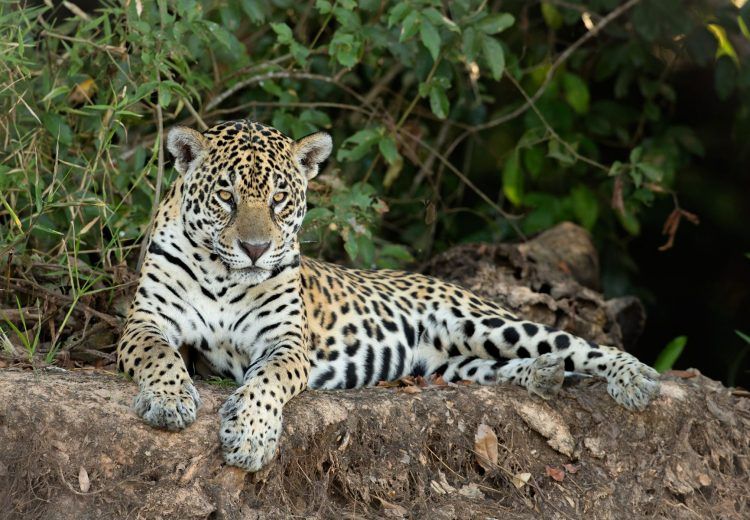
South America (including Galapagos)
August-September 2024
BRAZIL’S PANTANAL: JAGUARS AND SO MUCH MORE – South America’s best wildlife photography destination
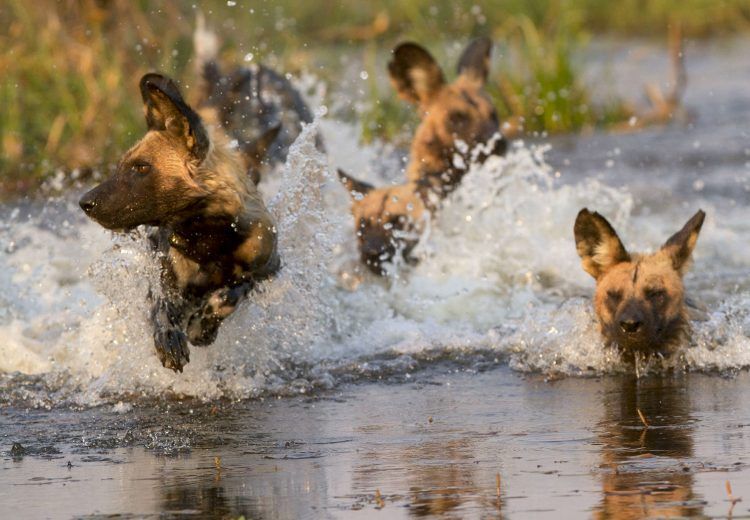
Botswana & The Okavango
November 2024
BOTSWANA: WILDLIFE SPECTACULAR – The photographic wonders of the Okavango and Chobe
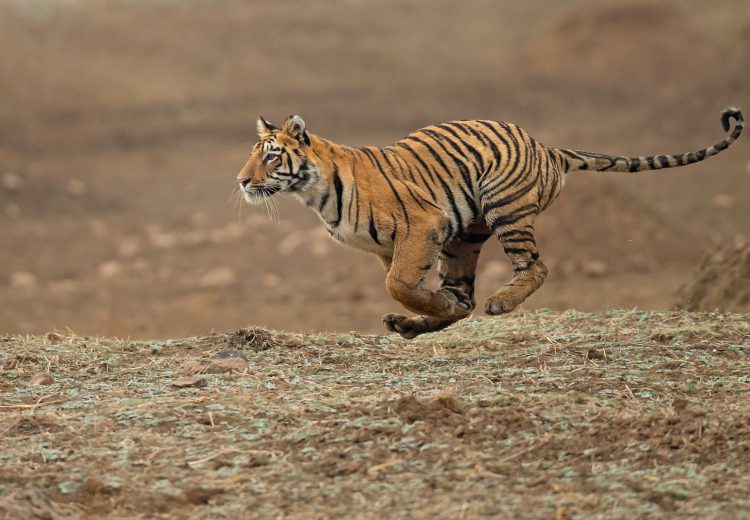
India
March-April 2025







